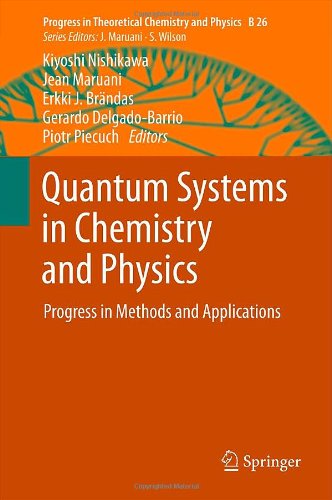

Most ebook files are in PDF format, so you can easily read them using various software such as Foxit Reader or directly on the Google Chrome browser.
Some ebook files are released by publishers in other formats such as .awz, .mobi, .epub, .fb2, etc. You may need to install specific software to read these formats on mobile/PC, such as Calibre.
Please read the tutorial at this link. https://ebooknice.com/page/post?id=faq
We offer FREE conversion to the popular formats you request; however, this may take some time. Therefore, right after payment, please email us, and we will try to provide the service as quickly as possible.
For some exceptional file formats or broken links (if any), please refrain from opening any disputes. Instead, email us first, and we will try to assist within a maximum of 6 hours.
EbookNice Team

Status:
Available0.0
0 reviewsQuantum Systems in Chemistry and Physics: Progress in Methods and Applications is a collection of 33 selected papers from the scientific contributions presented at the 16th International Workshop on Quantum Systems in Chemistry and Physics (QSCP-XVI), held at Ishikawa Prefecture Museum of Art in Kanazawa, Japan, from September 11th to 17th, 2011.
The volume discusses the state of the art, new trends, and the future of methods in molecular quantum mechanics and their applications to a wide range of problems in physics, chemistry, and biology. The breadth and depth of the scientific topics discussed during QSCP-XVI appears in the classification of the contributions in six parts:
I. Fundamental Theory
II. Molecular Processes
III. Molecular Structure
IV. Molecular Properties
V. Condensed Matter
VI. Biosystems.
Quantum Systems in Chemistry and Physics: Progress in Methods and Applications is written for advanced graduate students as well as for professionals in theoretical chemical physics and physical chemistry. The book covers current scientific topics in molecular, nano, material, and bio sciences and provides insights into methodological developments and applications of quantum theory in physics, chemistry, and biology that have become feasible at end of 2011.